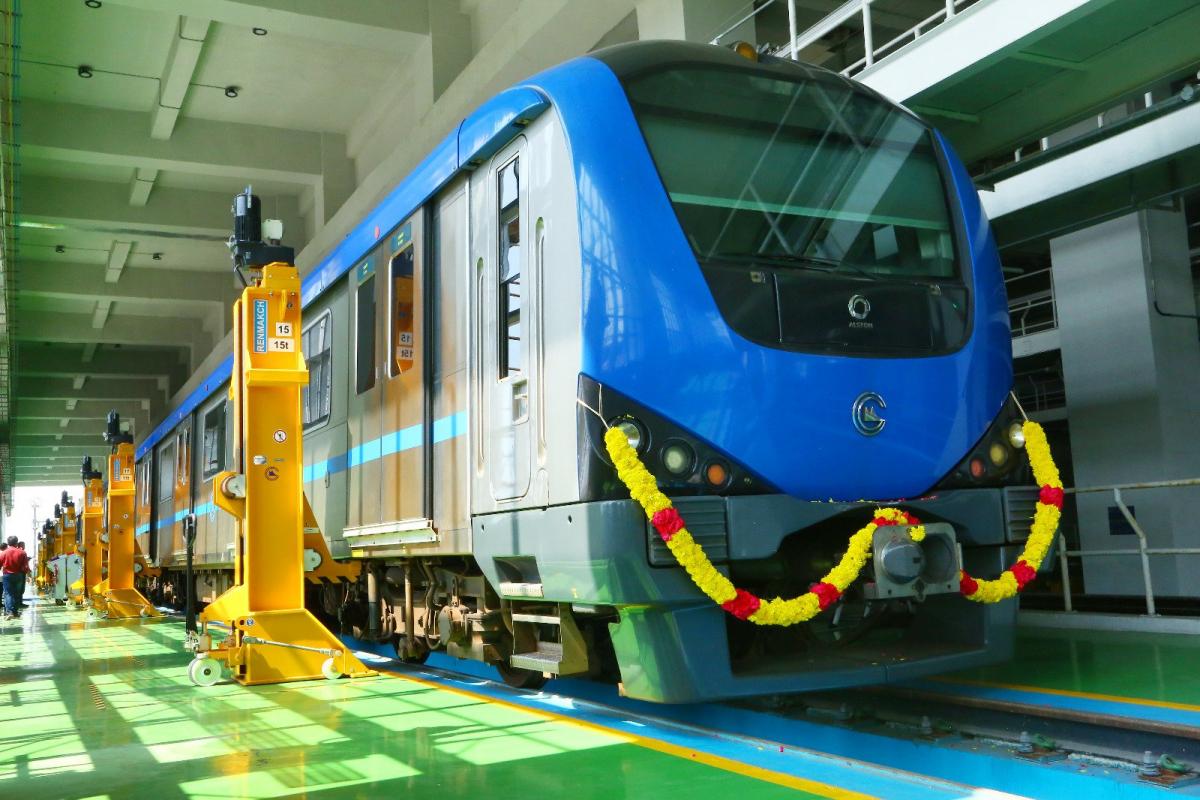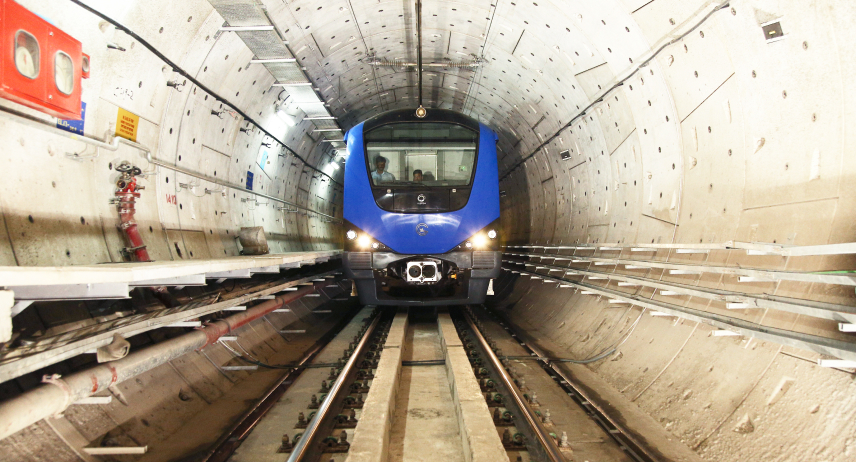Chennai is racing ahead in urban mobility with its ambitious metro rail expansion. Among the most awaited projects is the Porur–Poonamallee elevated corridor, a vital stretch under Phase II of the Chennai Metro Rail project. Spanning over 9.5 kilometers and housing 10 elevated stations, this corridor aims to drastically improve west Chennai’s connectivity. From traffic-choked junctions to fast-paced driverless travel, this elevated metro line is set to revolutionize daily commuting for lakhs of residents in Porur, Kattupakkam, and Poonamallee.
In this article, we deep-dive into the entire project—from conception to construction, from test runs to commissioning plans. Whether you're a commuter, urban planner, or infrastructure enthusiast, this detailed guide provides everything you need to know about one of Chennai’s most significant metro developments.
The Vision: Chennai Metro Phase II
Chennai Metro Phase II comprises three new corridors spanning a total of 118.9 kilometers:
- Corridor 3: Madhavaram to SIPCOT
- Corridor 4: Lighthouse to Poonamallee Bypass
- Corridor 5: Madhavaram to Sholinganallur
The Porur–Poonamallee stretch falls under Corridor 4, also called the Orange Line, and is entirely elevated. It covers areas that were previously underserved by public transit and is strategically planned to alleviate traffic congestion and offer reliable connectivity to Chennai’s western suburbs.
Strategic Importance of Porur–Poonamallee Line
Porur, Iyyappanthangal, and Poonamallee are among the fastest-growing suburbs in Chennai. These areas have seen exponential growth in real estate, education hubs, hospitals, and IT corridors. However, they have also suffered from poor traffic planning, narrow roads, and limited public transport.
Key benefits of the corridor include:
- Decongesting Mount-Poonamallee Road
- Reducing travel time to city core areas
- Enhancing connectivity to industrial and residential belts
- Offering an alternative to road-dependent commuters
This stretch links to Porur Junction, which itself connects to major arteries like Arcot Road and Inner Ring Road, making it a crucial transit hub.
Timeline of Development
- 2019–2020: Project planning and tendering initiated.
- 2021: Construction commenced by L&T and other key contractors.
- 2022–2023: Pier construction, viaduct erection, and station framework accelerated.
- March 2024: Civil work of most stations and double-decker viaduct at Kattupakkam completed.
- April–May 2025: Initial trial runs conducted on 10 km stretch using automated trains.
- August 2025: Speed trials and safety tests underway.
- Expected Commissioning: December 2025.
Engineering Marvels: Not Just Another Metro Line
Double-Decker Viaduct at Kattupakkam
A standout feature of this stretch is the construction of a double-decker viaduct at Kattupakkam, where the metro line passes above an existing flyover. This complex engineering feat demanded exceptional planning to ensure structural stability and minimal road disruption.
U-Girder Installations
The corridor also features U-girders, a precast concrete structure designed to support the tracks while reducing noise and vibration. These were installed using advanced segment launching technology, ensuring rapid and safe construction.
Driverless Metro System
Like the rest of Phase II, this line is built to be UTO-enabled (Unattended Train Operation). Though it will start with operators onboard, full automation will be enabled after successful safety validation.
Station List & Features
Here are the 10 stations on the Porur–Poonamallee line:
- Porur Junction
- Alapakkam
- Meenakshi College
- Kattupakkam
- Karayanchavadi
- Iyappanthangal
- Kumananchavadi
- Thelliyaragaram
- Poonamallee Bus Terminus
- Poonamallee Bypass
Common Features Across Stations:
- Elevated design with side or island platforms
- Escalators and elevators for universal access
- Platform screen doors (in select stations)
- Smart ticketing integration
- CCTV surveillance and energy-efficient lighting
Trial Runs and Testing
The first trial runs began in April 2025, between Poonamallee Depot and Porur Junction. These initial test runs were conducted at low speeds to verify:
- Brake responsiveness
- Acceleration/deceleration consistency
- Track alignment
- Signaling communication
- Emergency systems
- Passenger announcement systems
By June 2025, full-speed tests were conducted at design speeds of 70 km/h using a 3-coach UTO-enabled train. The train successfully completed round trips without driver intervention, monitored from the Poonamallee depot.
A total of three testing phases are planned before public launch:
- Functional Testing
- Safety & Emergency Readiness
- Commissioning Certification
Depot Facilities at Poonamallee
To support this stretch, the Poonamallee Depot has been constructed on a 25-acre site. The depot is equipped with:
- Train stabling and washing lines
- Automated maintenance bays
- Control rooms for remote monitoring
- Electrification substations
- Administrative buildings
The depot also serves as the operational hub for Corridor 4’s western segment.
Connectivity & Integration
Though this stretch serves as a standalone segment for now, its future integration makes it highly strategic:
- Connects to the upcoming Alapakkam–Vadapalani tunnel (Phase II Corridor 4 central segment)
- Link to Corridor 5 (Yellow Line) at Kumananchavadi and Iyyappanthangal junctions
- Potential future extension to Parandur Greenfield Airport
Additionally, seamless connectivity to MTC buses, auto stands, and feeder electric buses is being planned to promote end-to-end transit solutions.
Impact on Real Estate & Commuting
For Residents
- Travel time from Poonamallee to Porur Junction expected to reduce from 45 minutes (peak traffic) to just 12 minutes.
- Daily commuters can bypass traffic bottlenecks around Alapakkam and Iyyappanthangal.
For Real Estate
- Land prices in areas like Thelliyaragaram and Karayanchavadi have already seen a 15–20% spike.
- New housing and commercial developments are on the rise near elevated station zones.
Socio-Economic Impact
- Estimated daily ridership: 1.5–2 lakh passengers post full integration.
- Reduces carbon footprint by cutting dependence on fossil-fueled road transport.
- Job creation during construction and ongoing metro operations.
- Boosts urban mobility, especially for students, healthcare workers, and middle-class families living in the suburbs.
Budget & Financing
The total estimated cost of Corridor 4, including the Porur–Poonamallee stretch, stands at over ₹23,000 crore. Funding sources include:
- Asian Infrastructure Investment Bank (AIIB)
- Government of Tamil Nadu
- Central Government support
- Multilateral loans and sovereign bonds
The line is part of Chennai Metro’s commitment to sustainable urban transport backed by international financial institutions.
Challenges Faced
- Land acquisition delays at Porur and Kumananchavadi junctions
- Traffic management during girder launching
- Delays due to the COVID-19 pandemic and labor shortages
- Complex coordination with utility shifting (water pipelines, telecom cables)
Despite these hurdles, the project remains largely on track for a December 2025 launch.
What to Expect in the Coming Months
July–September 2025
- Final round of system checks
- Emergency evacuation drills
- Station facility readiness
October–November 2025
- CMRS (Commissioner of Metro Rail Safety) inspection
- Public trial runs
- Staff and system training
December 2025
- Grand public inauguration
- First phase open to passengers
Conclusion
The Porur–Poonamallee elevated corridor isn't just a concrete viaduct or a sequence of stations—it’s a signal of Chennai’s transition into a world-class transit city. With driverless trains, advanced engineering, and improved integration, this project represents the new face of urban mobility in India.
As the city gears up to launch this metro line by the end of 2025, residents can look forward to faster, cleaner, and more reliable public transportation. Whether you live in Poonamallee or Porur, work in Guindy or study in Vadapalani, your daily travel is about to change forever—for the better.



